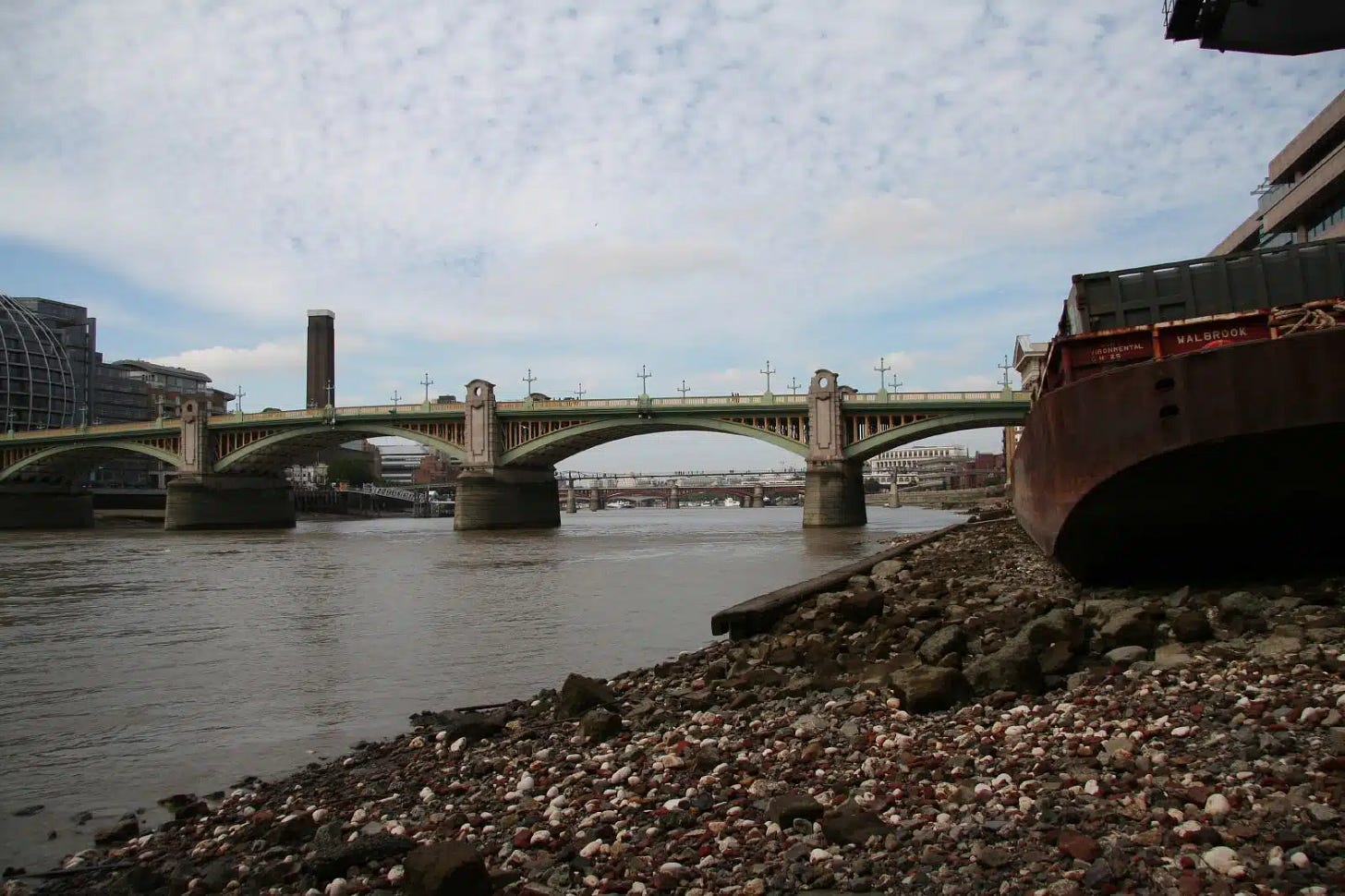
For centuries, human remains recovered from the River Thames have puzzled archaeologists. Were they the result of accidental drownings, burials disturbed by shifting tides, or evidence of ritual deposition? A new study in Antiquity has established a far more precise timeline, revealing that these skeletal remains span nearly 6,000 years—from the Neolithic to the post-medieval period.

Researchers from the Natural History Museum in London and Historic England analyzed 61 individuals, using 30 newly obtained radiocarbon dates to refine previous chronological estimates. Their findings indicate that many of these remains belong to the Bronze and Iron Ages, aligning with wider European traditions of depositing human bodies in rivers and wetlands.
For more than two centuries, human bones have been recovered from the Thames, particularly in the lower reaches of the river that run through London. Early accounts from the 19th and 20th centuries often linked these finds to prehistoric burials, but without scientific dating methods, many of these interpretations remained speculative.
Over time, researchers recognized that human remains in the river represented a complex history of deposition. Were they the victims of crime or execution? Did they drown accidentally? Or were they deliberately placed in the river as part of cultural or religious practices? The lack of precise dating prevented scholars from answering these questions.
To create a more complete timeline, researchers selected samples from 61 individuals, applying rigorous radiocarbon dating techniques to 30 of them. By combining this new dataset with previous radiocarbon results, they built a chronological framework spanning from approximately 4000 BCE to 1800 CE.
One of the most significant findings was the clustering of remains in the Bronze and Iron Ages. Sixteen individuals dated to the Bronze Age (2500–800 BCE), with a particularly strong presence from the Late Bronze Age (1200–800 BCE). Another 15 individuals belonged to the Iron Age (800 BCE–100 CE), with the highest concentration in the Early Iron Age (800–400 BCE).
While remains from the Roman, medieval, and post-medieval periods were also present, their numbers were much lower. Interestingly, there was a gap in the dataset between 300 and 600 CE, corresponding to the early medieval period, which may reflect changes in burial practices or a reduced population near the river.
The spatial distribution of the remains provided further clues. By dividing the lower Thames into 5-kilometer study zones, researchers found that Bronze and Iron Age remains were concentrated upstream, while post-medieval individuals were more common in central London and the Isle of Dogs.
This pattern aligns with broader evidence from northwest Europe, where rivers and wetlands played a role in later prehistoric ritual activities. Archaeological sites across Britain and the Continent have shown that human bodies—sometimes whole, sometimes disarticulated—were deliberately placed in watery locations, possibly as offerings or part of funerary customs.
“The concentration of remains from the Late Bronze and Early Iron Ages in upstream zones suggests a cultural tradition of deposition,” the researchers wrote.
The practice of depositing objects, animals, and even human remains into rivers has been well-documented at sites such as Flag Fen in England and Hjortspring Bog in Denmark. These finds suggest that rivers were seen as liminal spaces—boundaries between the living and the dead, the earthly and the spiritual.
The newly refined chronology provides a foundation for further research. Scientists now have the opportunity to explore questions related to taphonomy (how bodies decay and are preserved in river environments), demographics (age and sex distribution), skeletal trauma (evidence of violence or execution), and isotopic analyses (clues about diet and migration).
Understanding why people ended up in the Thames over thousands of years will require more than just radiocarbon dates. Ongoing research may reveal whether these individuals met violent ends, whether their remains were part of structured ritual activity, or whether they represent forgotten funerary customs lost to time.
“These findings provide a crucial framework for future research into the human remains of the Thames,” the study concluded.
As scientists continue to investigate the river’s archaeological record, the Thames may yet offer more stories from the deep—stories of lives lost, rituals performed, and a connection to the water that has persisted for millennia.
-
Brück, J. (1995). “A Place for the Dead: The Role of Human Remains in Late Bronze Age Britain.” Proceedings of the Prehistoric Society, 61, 245–277.
-
**Bradley, R. (2017). “The Idea of Order: The Circular Archetype in Prehistoric Europe.” Oxford University Press.
-
**Needham, S., Parfitt, K., & Varndell, G. (2006). “The Ringlemere Cup: Precious Cups and the Beginning of the Channel Bronze Age.” British Museum Research Publication 163.






